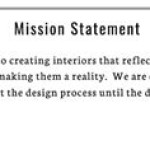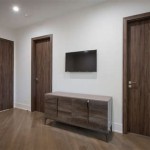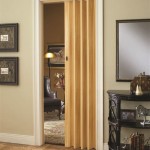Interior Design Criteria: Guiding Principles for Successful Spaces
Interior design is more than just selecting aesthetically pleasing furniture and decor. It encompasses a comprehensive process that considers the functionality, aesthetics, and well-being of a space. This process involves establishing clear interior design criteria, which act as guiding principles for achieving a successful design outcome.
1. Functionality and Purpose
The first and foremost criterion in interior design is functionality. Any design must prioritize the space's intended use and the activities that will occur within it. This principle necessitates understanding the needs and requirements of the users, whether they are residents, employees, customers, or guests.
For instance, a residential living room designed for relaxation and entertainment will have different criteria compared to a commercial office designed for productivity and collaboration. In a living room, comfortable seating arrangements, ample natural light, and appropriate lighting fixtures might be paramount. In an office, workspace layouts, access to technology, and noise reduction measures are crucial.
By defining the space's purpose and the activities it will accommodate, designers can establish criteria for furniture selection, layout, and spatial organization. This process ensures that the space is not only aesthetically pleasing but also practical and efficient for its intended use.
2. Aesthetics and Style
While functionality forms the foundation of interior design, aesthetics play an equally important role. The aesthetic criteria define the visual language and style of the space. This involves considering factors such as color palettes, textures, materials, and furniture styles.
The chosen aesthetic should reflect the overall design concept, complementing the functionality and creating a cohesive and harmonious environment. For example, a modern office might emphasize clean lines, minimalist furniture, and neutral color palettes. In contrast, a traditional home might feature ornate details, antique furniture, and warm, earthy tones.
Aesthetics go beyond mere decoration. They contribute to creating a desired mood and atmosphere. A calming color palette and soft textures might be suitable for a spa, while vibrant colors and bold patterns might be more appropriate for a child's playroom.
3. User Experience and Well-Being
Beyond functionality and aesthetics, interior design criteria must consider the user experience and well-being. Designers should ensure that the space promotes comfort, safety, and mental well-being.
This includes factors like:
- Ergonomics of furniture
- Adequate lighting and ventilation
- Accessibility features for individuals with disabilities
- Noise reduction strategies for creating a peaceful environment
- The use of natural materials and sustainable practices
By considering these factors, designers can create spaces that are not only visually appealing but also conducive to physical and mental well-being.
4. Budget and Constraints
Financial constraints are a crucial factor in interior design. Designers must work within a predetermined budget, considering the cost of materials, labor, and furniture. This often requires balancing aesthetic preferences with budget limitations.
Understanding the client's budget allows designers to prioritize essential elements and make informed decisions about material selection and construction. Designers might explore cost-effective alternatives, utilize existing furnishings, or implement creative solutions to maximize aesthetic impact within budget constraints.
Additionally, designers must consider other constraints, such as building codes, existing structural elements, and available space. These constraints influence the design process and shape the final outcome.
By considering all these criteria, interior designers can develop plans that effectively balance functionality, aesthetics, user experience, budget, and project constraints.

Ilrates Classrooms Interior Design Criteria In A Way That Is Scientific Diagram

Interior Design Criteria Matrix For Office I Will Use A Similar Graph As Its Easy To W Presentation Techniques Architecture Diagram

Example Of Experience Design Criteria Developed During The Scientific Diagram
The Design Process
Copyrighted Material

Pin By Gregezzo On Models Sketches Sections Etc Interior Design Programs Architecture Program Process
Criteria Matrix Template Interior Design

Interior Components Assessment Based On Their Environmental Scientific Diagram
Copyrighted Material
Criteria Matrix Template Interior Design








